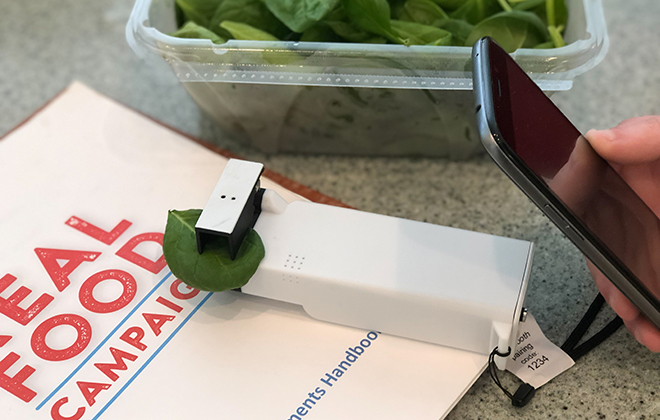
Update: July 2021 — The data analysis from the first two years of samples collected has proven to be statistically strong, and we now have models to confidently make predictions of the relative quality of ten crops: beets, bok choy, carrots, kale, lettuce, mustard greens, oats, swiss chard, wheat, and zucchini. We expect calibrations for another four crops to be available by the end of this year. These additional calibrations will be accessible through a software update, which we will alert you to via email as they are ready.
While the supply chain issues of 2020 slowed our ability to produce enough devices to meet demand, we were otherwise wonderfully busy, quadrupling the number of Grower Partners from 30 to 150, increasing the number of test crops from 6 to 20, and doubling the number of samples collected from 2000 to 4000.
Looking ahead, using the data from 2020 and 2021 seasons, we anticipate increasing the number of crops for which one can get a readout. We will continue to add crops (and meat and dairy) as quickly as the funding allows. Sampling, testing and data analysis is not cheap. :)
In addition, the vision behind the bionutrient meter is not just a tool for the end consumer, but also to provide real-time guidance to the farmer in the field who wants to grow the most nutrient dense crops. As we collect data and perform the meta-analysis, this capacity will be baked into subsequent iterations of the tool and app. This coming year, we hope to add the functionality to measure chlorophyll in plant leaves and relative soil carbon assessments as well.
While we have some answers for you, much of what we can do with it is actually still being understood. Providing nutritional analysis and estimates requires a tremendous amount of data we are still gathering and from which we are building the necessary algorithms. As we do so, we can better understand variation in the spectra so we can calibrate these and future tools faster and cheaper. If that doesn’t excite you, then maybe you should wait a year or so to buy one when we have a “consumer-ready” device. But if you ARE excited to explore with us, then we would propose the following short list of experiments to start off with:
- How much spectral variation is there in foods from different sources?
- How does that spectral variation relate to taste?
- How does that spectral variation relate to variety, soil type, fertility program, epigenetics, microbiome, climatic conditions, age, post harvest conditions, time of year, etc?
These are the basic questions we are focused on answering, and where we hope to start with those who received this first generation version.
Got other ideas? Great! The possibilities are wide open. We've set up forums for the community to discuss their thoughts, discoveries, challenges, and insights.
Together as farmers and consumers, we can take control of our shared nutritional destiny!
Will the meter tell me what food is better for me, or if my growing practices are good?
Not yet, but with your help we expect that soon it will.
Getting these tools into the hands of farm and community partners is helping us understand food variation. Initially, this data will be used for device calibrations, and correlations with our in-lab data. Once those calibrations are complete, it’s likely some, or maybe even all, of the data we’re gathering now will be able to be “back-calibrated” to derive meaningful statistics, but we won’t know for sure until we get there.

